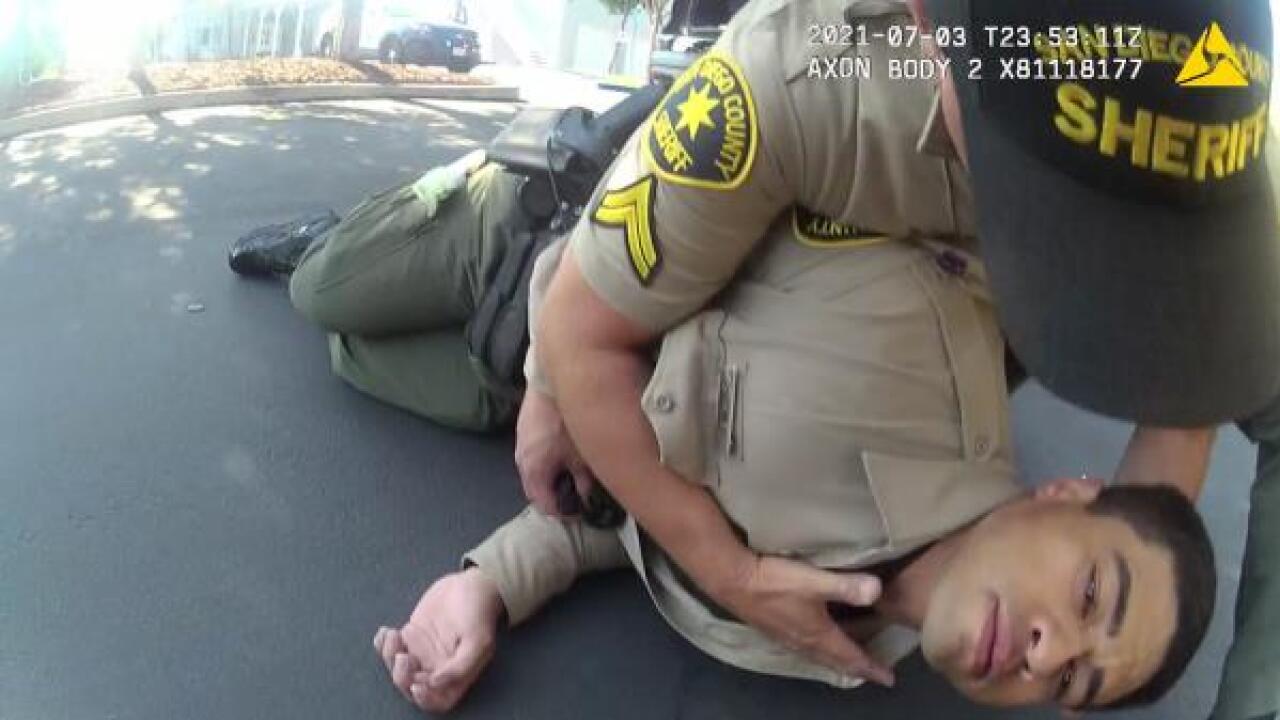SAN DIEGO — Medical experts are voicing skepticism over a now-viral video that claims to show a San Diego County Sheriff's deputy accidentally overdosing on fentanyl.
"I would say there's zero chance that it was caused by fentanyl exposure, in this case," said Leo Beletsky, a professor at the UC San Diego School of Medicine.
The video, released by the department last week, shows a deputy falling to the ground after reportedly coming into contact with fentanyl — a dangerous opioid — while he was processing drugs at a scene.
The deputy was given Narcan to reverse the effects and has since been released from the hospital.
ORIGINAL STORY: 'It's an invisible killer': San Diego Sheriff's release body cam of deputy's exposure to fentanyl
San Diego County Undersheriff Kellly Martinez said Friday that the deputy was wearing gloves at the time. She believed that the deputy either inhaled or ingested the powder through the air or skin.
However, Beletsky says that it's biologically impossible to overdose to that extent so quickly by touching the substance. He added that fentanyl would take much longer to overdose on, either through the skin or by breathing it in.
"You would need to be in a room where lots of powder was constantly in the air for hours in order to start ingesting enough of it to experience these symptoms," Beletsky said.
"The symptoms being displayed are not consistent with an opioid overdose," said Dr. Ryan Marino, a medical toxicologist with the University Hospitals of Cleveland.
Marino added that an overdose would result in a loss of the airway.
"The officer who is experiencing symptoms is breathing on his own. He is maintaining his airway," Marino said. "Even looking up close at his eyes, which are open, which is atypical. He doesn't have the pinpoint pupils that we would expect to see. He never loses his coloring or kind of turns blue."
Marino suggested that the deputy may have experienced an episode of severe panic.
According to the American College of Medical Toxicology, "The drug must enter the blood and brain from the environment. Toxicity cannot occur from simply being in proximity to the drug."
"[This type of video] gives people an erroneous idea of what a fentanyl overdose looks like," Beletsky said. "I think it unnecessarily stresses out first responders and other people who may be in contact with someone who is overdosing."
Lab results released by the department show the powder contained methamphetamine, fentanyl and flourofentanyl.
"On August 5, the San Diego County Sheriff's Department released a public safety video related to the dangers of Fentanyl," the department said in a statement. "We have received inquiries into the authenticity and accuracy of the video message. The video was created from an actual incident involving our deputy as he processed a white powdery substance that tested positive for Fentanyl."
Following the skepticism, the department released the incident report, lab results from the substance foundat the scene, and the dispatch report.
This story was originally published by Jennifer Kastner on Scripps station KGTV in San Diego.




